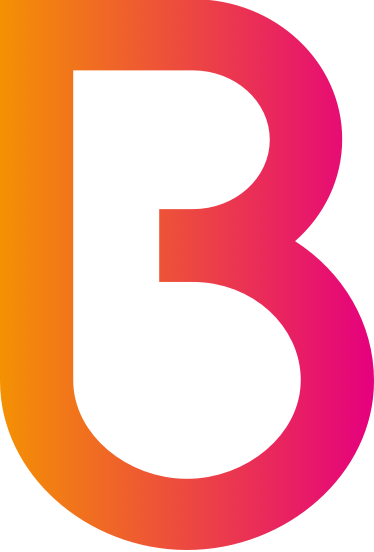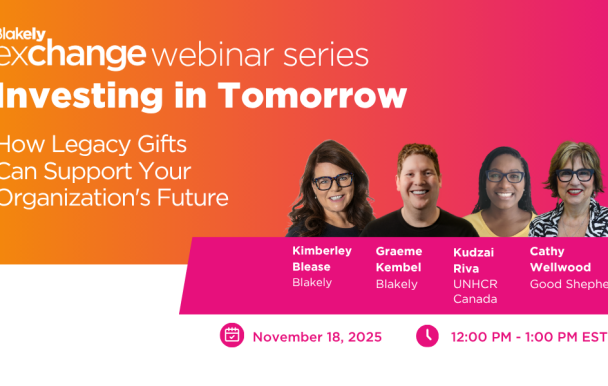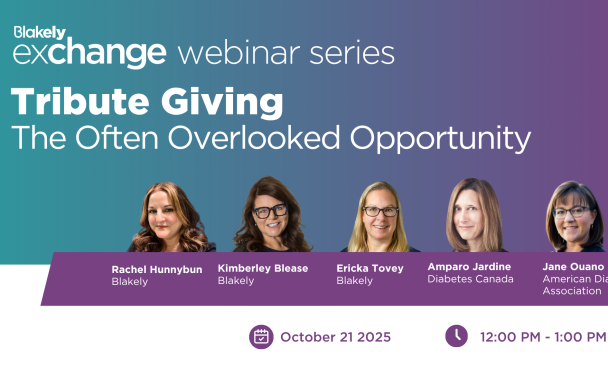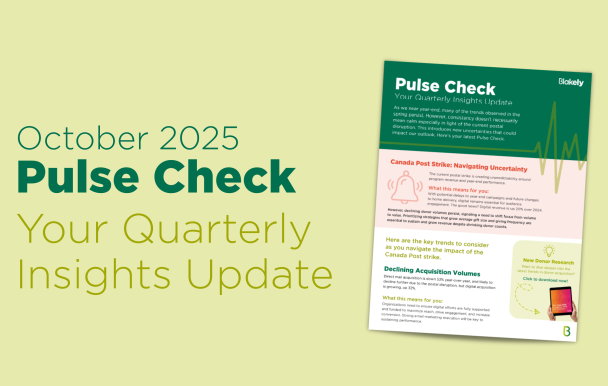Transforming legacy giving starts with changing the conversation with yourself
We believe in the power of conversation to engage and connect people. And this idea is particularly important when it comes to transforming or even making real change in Legacy giving. You will hear us talk about driving Legacy conversations both with known audiences and unknown, as well as internally in your own organization. But let’s start these conversations with one of the most important people in the mix – ourselves.
Start with your aspirations
Let’s start by asking ourselves some key questions. How is Legacy seen across my organization? Is it siloed and one person’s job (possibly mine alone) or are there many people and areas championing it? How is my organization seen by my donors and stakeholders? Do we make Legacy giving normalized, joined up across our journeys, and engaging? What does it feel like for a donor who is inspired to have a conversation with someone in your organization? These will be telling insights that can form the beginning of your strategy to transform your Legacy program.
What is the purpose of Legacy giving for you? What do you want to achieve? What are the big things you want to accomplish in the future? Starting the conversation with yourself will help you form the vision for the program and help you start thinking differently about the role of legacies in your organization. It will give you the opportunity to be open and to have different conversations, by engaging everyone in a new and accessible journey for donors and prospects.
Truly breaking down barriers
If your organization has always “done” Legacy in certain ways it’s time to re-evaluate. New understanding based on the major changes in donor behaviour, and our insights into donor needs and motivations now, has changed our view and response. If your aspiration in Legacy is to truly influence and engage people, then Legacy giving needs to be embedded in all donor programs. You have an opportunity to expand the conversation to colleagues and identify the connections and input, the clues to Legacy opportunities, and the ways in which different areas can impact and take advantage of the values-based connections that Legacy giving provides.
How you build a business plan and engage the leadership of your charity will be different to working with your colleagues leading revenue areas, or marketing and comms looking at content. How you engage your donor care team will be key. All will require a slightly different approach to conversations but all need to be engaged and considered when you are building and implementing your strategy and plans.
Everyone has a role
For Legacy giving, like all key areas in the organization, our cultures and the way we behave need to be open and conducive to truly changing how we engage people. If your organization insists on only recognizing Legacy gifts if they are signed on a form and don’t see the value of a Legacy conversation, then you might have some work to do. By pushing on forms, are you sending a signal that you don’t trust or value your donors; that they are a transaction and not a valued relationship? You need to look at the openness of your organization to investing in an inspiring Legacy proposition, finding and tracking Legacy insights, building journey strategies, or inspiring integrated campaigning because focus on these foundational and integration strategies is key to transforming your Legacy program.
All channels matter
We need to move to digital-led initiatives that truly expand the Legacy conversation with donors and prospects and support influence and engagement in your donor relationships. If your charity doesn’t see the power in truly investing to create engagement on your Legacy pages of your website, to meet donors where they are now, and inspire them to connect, then you are missing one of the great Legacy opportunities before us. One way to really build out a dynamic donor journey is to talk to programs, marcomm and revenue leads – all in one room, at the same time. Show them what you are doing and why, and demonstrate the need for content and marketing awareness for Legacy. This is one of the most effective tools for internal engagement and it truly works. And really underpin digital connections – your website and other owned channels are vital to Legacy engagement across all audiences and Legacy can play a key role of engagement in evergreen digital strategies.
All of this work is worth the effort – realizing the amazing power to transform your charity by rethinking how Legacy is woven through the fabric and used to inspire people at every turn.
Build your internal and external case
If your charity believes that Legacy just falls from the stars and no investment is needed, or future value measurements don’t need to change – and the only thing that matters is confirmed expectancies – then it’s time for a rethink. By working to change people’s views inside your organization, you can expand the horizon for Legacy.
Looking differently at Legacy giving and having the numbers to back you up is a great way to expand that conversation and build support internally. Start with the source of all fulfilled donors – work on understanding where your current gifts come from and who you know and who you don’t. Understand the demographics of the market and the factors that make this the most exciting time to be driving Legacy. And build up a deep understanding of your unique audiences.
Along with Legacy benchmarking and relationship analytics, we harness the power of Affinity Surveys to help us really understand the nuances of donor motivations and to help us look for better ways to reach and engage, and create a better, more integrated donor journey. These are real insights that can change the way you build your entire strategy. So engage your colleagues in building a better Legacy program – one that is better for the organization but, more importantly, that’s better for the donors themselves. Building a strategy and culture that is going to change the way your charity engages in Legacy, by focusing on conversations and on influencing rather than selling, cannot be one person’s job. It is going to take everyone working together to do things differently and make real change that will transform your donor relationships and your revenue in the future. The conversation starts with you.









